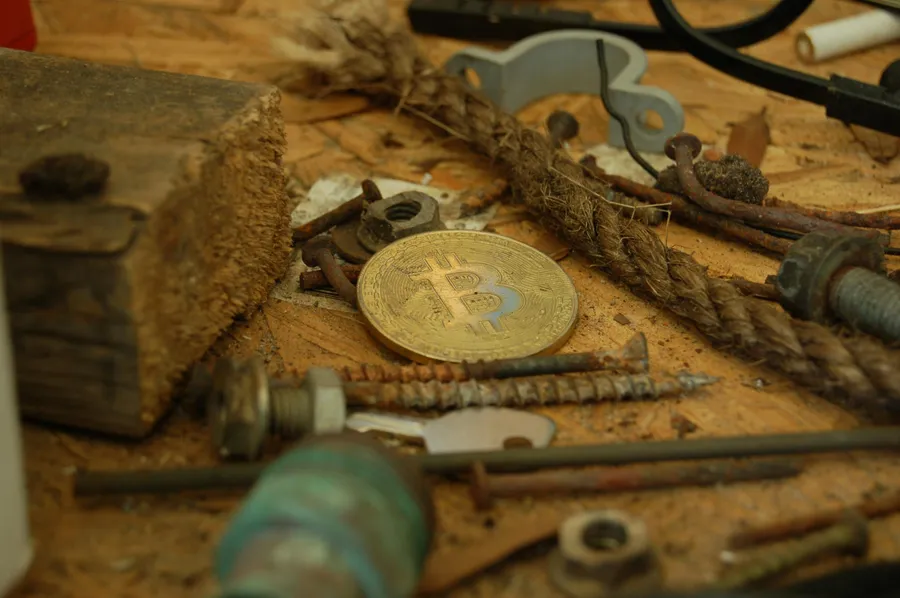What is DeFi Lending? – Loans Without Banks and Intermediaries

Title: “DeFi Lending: The Wild West of Finance – Avoiding the Traps and Making It Out Alive”
Subtitle: “Lessons from a Battle-Hardened Security Expert on How Not to Get Hosed in Decentralized Finance”
Introduction:
It’s 2022, and we’re living in an era of digital revolution. You can do almost anything online today – from buying groceries to ordering a cab, getting an education or even dating! But did you know that you can now borrow money without having to deal with banks, credit scores, or lengthy paperwork? Welcome to the world of DeFi lending.
DeFi, short for Decentralized Finance, is like the Wild West of finance. It promises freedom from traditional financial systems’ shackles but also comes with its own set of hazards. As someone who’s spent more than their fair share of time picking through the carcasses of hacked platforms and smelling out scams, let me be your guide on this thrilling journey into the heart of DeFi lending.
H2: What is DeFi Lending?
DeFi lending, in simple terms, is borrowing or lending cryptocurrencies without intermediaries. Think of it like a peer-to-peer (P2P) lending platform on steroids. Instead of relying on banks to connect borrowers and lenders, DeFi uses smart contracts – self-executing programs – that run on decentralized protocols.
For instance, you could lock up your ETH in a protocol like Compound or Aave, and it will mint you cETH or aTokens, representing your share of the total deposited assets. These tokens can then be used as collateral to borrow other cryptocurrencies, all without needing anyone’s permission.
H2: Why Would You Want to Lend/Borrow in DeFi?
Now that you know what DeFi lending is let’s talk about why anyone would want to participate. There are a few compelling reasons:
High Yield: DeFi protocols often offer significantly higher interest rates than traditional banks or even other P2P lenders. For example, while most banks might give you around 1% APY on savings accounts, platforms like Yearn Finance or Curve Finance could offer up to 30% APY!
Flexibility: With DeFi lending, you’re not locked into long-term commitments. You can deposit and withdraw funds whenever you want, giving you more control over your money.
Transparency: All transactions on a blockchain are public and transparent, which makes it easier to track where your money is going and what fees are being charged.
H2: But Wait, There’s Catch…
While DeFi lending has its perks, there are also some significant pitfalls that could make even the most seasoned investor tremble. Here are a few examples:
Smart Contract Bugs: Remember the infamous DAO hack back in 2016? Over $50 million worth of Ether was stolen due to a vulnerability in the DAO’s smart contract code. Smart contracts aren’t immune to bugs, and if they’re not audited thoroughly by experts, they can leave the door wide open for hackers.
Rug Pulls: Just like in an old Western movie where the charismatic leader rides off with all the townsfolk’s savings, rug pulls happen when developers abandon a project, leaving investors high and dry. The infamous SushiSwap fiasco is a prime example.
Phishing Scams: With the rise of NFTs (Non-Fungible Tokens), phishing scams have become more sophisticated than ever. Scammers create fake websites and social media accounts, tricking users into sending their valuable NFTs or cryptocurrency to the wrong address.
H2: So, How Do You Stay Safe in DeFi Lending?
Here are some crucial tips to navigate the perilous landscape of DeFi lending without getting hosed:
DYOR (Do Your Own Research): Always research projects thoroughly before investing. Look at their whitepaper, GitHub repository, and check if they’ve been audited by reputable firms like ConsenSys or TrailofBits.
Use Reputable Platforms: Stick to established platforms with a solid track record of security. Compound, Aave, and MakerDAO are some examples.
Keep Your Private Keys Safe: Never share your private keys or seed phrases with anyone. If you do, consider your funds lost forever. Use hardware wallets like Ledger or Trezor to store your crypto securely offline.
Watch Out for Red Flags: If a project promises unrealistic returns or has a suspicious-looking website, it’s probably best to stay away. Remember, if something seems too good to be true, it usually is.
Conclusion:
DeFi lending can be an exhilarating ride, but it comes with its fair share of dangers. As a seasoned crypto security expert who’s seen more than their fair share of hacks and scams, my advice is this: tread cautiously, do your research, and always keep your private keys safe. After all, the Wild West was never for the faint-hearted.
Remember, DeFi lending isn’t a get-rich-quick scheme; it requires patience, diligence, and above all, common sense. Embrace the freedom that comes with decentralized finance but don’t forget to stay vigilant – the cowboys are still out there!









